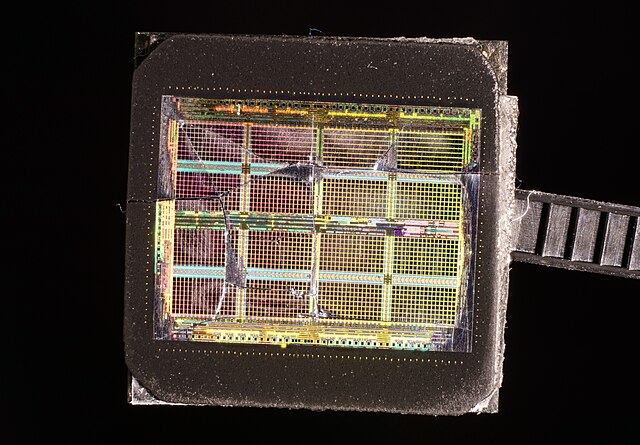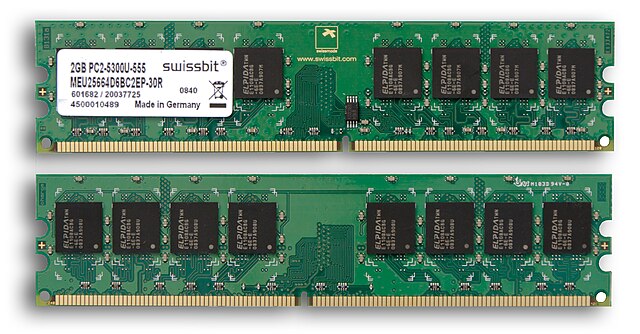Dynamic random-access memory
Dynamic random-access memory is a type of random-access semiconductor memory that stores each bit of data in a memory cell, usually consisting of a tiny capacitor and a transistor, both typically based on metal–oxide–semiconductor (MOS) technology. While most DRAM memory cell designs use a capacitor and transistor, some only use two transistors. In the designs where a capacitor is used, the capacitor can either be charged or discharged; these two states are taken to represent the two values of a bit, conventionally called 0 and 1. The electric charge on the capacitors gradually leaks away; without intervention the data on the capacitor would soon be lost. To prevent this, DRAM requires an external memory refresh circuit which periodically rewrites the data in the capacitors, restoring them to their original charge. This refresh process is the defining characteristic of dynamic random-access memory, in contrast to static random-access memory (SRAM) which does not require data to be refreshed. Unlike flash memory, DRAM is volatile memory, since it loses its data quickly when power is removed. However, DRAM does exhibit limited data remanence.

Motherboard of the NeXTcube computer, 1990, with 64 MiB main memory DRAM (top left) and 256 KiB of VRAM (lower edge, right of middle)
A pair of 32 MB EDO DRAM modules
A 512-MBit Qimonda GDDR3 SDRAM package
Inside a Samsung GDDR3 256-MBit package
Random-access memory is a form of electronic computer memory that can be read and changed in any order, typically used to store working data and machine code. A random-access memory device allows data items to be read or written in almost the same amount of time irrespective of the physical location of data inside the memory, in contrast with other direct-access data storage media, where the time required to read and write data items varies significantly depending on their physical locations on the recording medium, due to mechanical limitations such as media rotation speeds and arm movement.
A 64 bit memory chip die, the SP95 Phase 2 Buffer Memory produced at IBM mid 60s, versus memory core iron rings
Example of writable volatile random-access memory: Synchronous Dynamic RAM modules, primarily used as main memory in personal computers, workstations, and servers.
8GB DDR3 RAM stick with a white heatsink
These IBM tabulating machines from the mid-1930s used mechanical counters to store information.








